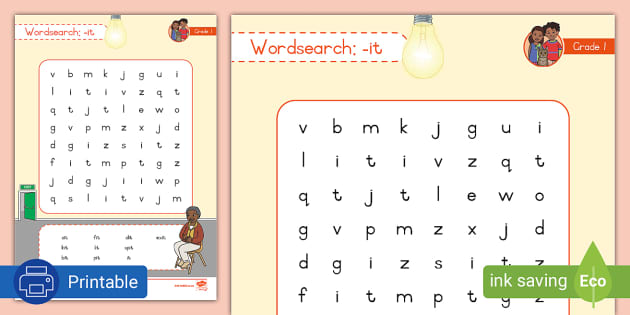Introduction to IT Wordsearch
When you think about the term “IT wordsearch”, a couple of different ideas might pop into your head. For some, it could mean a classic word puzzle filled with information technology terms. For others, it might be connected to digital tools or online platforms that allow people to search for IT-related keywords in an interactive way. Regardless of which direction you lean, IT wordsearch is a fascinating blend of entertainment, education, and professional development.
At its core, a wordsearch is simple. You get a grid of letters, and your job is to find hidden words. But when you add IT into the mix, the puzzle transforms into something more specialized. Imagine searching for words like “firewall,” “cloud,” “encryption,” or “algorithm” in a grid—it’s not just a game anymore. It becomes a fun and engaging way to reinforce technical knowledge while also challenging your brain.
The appeal of IT wordsearch lies in its ability to connect learning with play. People in the tech world often deal with complex topics, acronyms, and jargon. Turning those into puzzle form makes the content less intimidating and more approachable. Whether you’re a student learning computer science, an IT professional brushing up on concepts, or just someone who enjoys puzzles, IT wordsearch has a unique value.
The Rise of Wordsearch Puzzles in the Digital Age
Wordsearch puzzles have been around for decades, often printed in newspapers, puzzle books, and educational materials. However, in today’s world where everything is digital, wordsearches have taken on a new life. Online platforms, mobile apps, and even interactive websites now host thousands of themed puzzles—including those tailored specifically for IT.
The digital shift has made these puzzles more accessible. Instead of carrying a booklet, you can simply log onto a site or open an app and start solving. You can even customize puzzles to focus on particular IT fields, such as cybersecurity, software development, or networking. This customization is what makes IT wordsearch especially appealing for educators and trainers.
Another key reason for the rise of digital wordsearches is gamification. People love competition and progress tracking. Modern IT wordsearch platforms often include leaderboards, timed challenges, or badges for completing levels. This gives learners the motivation to keep going while subconsciously reinforcing their IT vocabulary.
In addition, wordsearch puzzles are no longer just about entertainment. Many companies use them as learning tools during employee training sessions. For example, new hires in IT departments might be introduced to company-specific jargon through a custom IT wordsearch. It’s a lighthearted way to make sure everyone gets familiar with the terms without overwhelming them.
What Makes an IT Wordsearch Different?
At first glance, an IT wordsearch looks like any other word puzzle. But when you take a closer look, you’ll notice several differences. The main one is the theme—it’s entirely centered around information technology. Words that might appear include technical terms, abbreviations, tools, and even trending concepts in the tech industry.
Another unique feature is the difficulty level. Since IT terminology can be complicated, an IT wordsearch might be more challenging than a general one. For example, finding a word like “cryptography” or “virtualization” in a grid takes a bit more concentration than spotting everyday words like “apple” or “house.” The length and complexity of the words naturally raise the difficulty level, making it more engaging for adults and professionals.
IT wordsearch puzzles can also be tailored to specific niches within the field. A cybersecurity-themed puzzle may include terms like “phishing,” “malware,” or “firewall,” while a software development puzzle might focus on “Python,” “JavaScript,” or “API.” This niche-based approach ensures that the puzzle is not just fun but also relevant to the user’s area of interest.
The ultimate difference, however, is the dual purpose. An IT wordsearch is not just for fun—it’s also a learning tool. Whether you’re prepping for a certification exam, working on professional development, or just trying to remember a concept, these puzzles help reinforce knowledge in an enjoyable way.
Educational Benefits of IT Wordsearch
One of the most overlooked aspects of IT wordsearch puzzles is how effective they are for learning. Education doesn’t always have to be serious or stressful; sometimes, the simplest tools have the biggest impact.
First, wordsearch puzzles improve vocabulary retention. When you’re repeatedly scanning for a word like “encryption,” your brain makes a stronger connection with the term. You’re not just reading it—you’re actively seeking it out. This process builds memory in a way that passive reading can’t always achieve.
Second, IT wordsearch puzzles enhance pattern recognition and focus. IT professionals often need to identify patterns, troubleshoot issues, and spot errors in code. Believe it or not, searching for words in a grid mimics this skill. It trains the brain to identify hidden structures, which can later translate into real-world problem-solving abilities.
Third, these puzzles can boost confidence. For beginners in IT, technical jargon can feel overwhelming. Solving a wordsearch that’s filled with those terms provides a gentle introduction. Instead of feeling intimidated, learners feel accomplished when they recognize and find the terms. This positive reinforcement can motivate them to keep learning more complex concepts.
Finally, IT wordsearches are an excellent group activity. Teachers, trainers, or team leaders can use them in classrooms or workshops to encourage participation. They work as icebreakers, team-building exercises, or even fun tests of knowledge. The competitive yet relaxed environment makes the learning process more enjoyable.
IT Wordsearch in the Workplace
You might not think of puzzles when you imagine a professional IT setting, but IT wordsearch has slowly made its way into corporate culture. Companies are beginning to realize the value of gamified learning, and puzzles are one of the easiest ways to implement it.
For example, onboarding programs often include introductory sessions where new employees need to get familiar with technical and company-specific terms. Instead of giving them a boring glossary, HR teams can create a custom IT wordsearch that introduces those words in a playful way. Employees end up learning without feeling like they’re studying.
Similarly, training workshops use IT wordsearch puzzles as warm-up activities. Let’s say a company is rolling out new software. A wordsearch filled with related terms—like “dashboard,” “analytics,” or “cloud”—can help familiarize employees with the language before diving into hands-on training.
Even team-building events benefit from IT wordsearch puzzles. They can be turned into friendly competitions between teams. Since everyone gets equal exposure to the terms, it levels the playing field and encourages collaboration. Plus, who doesn’t enjoy a little puzzle-solving break in the middle of a busy workday?
How to Create Your Own IT Wordsearch
The beauty of IT wordsearch puzzles is that they’re easy to create. With a little effort, you can design a puzzle that’s tailored to your exact needs.
The first step is to choose your theme. Do you want a general IT puzzle, or do you want to focus on a niche like networking, coding, or cybersecurity? Your theme will guide your word list.
Next, build your word list. Make sure you choose terms that are relevant and challenging, but not so obscure that nobody will recognize them. A mix of short and long words usually works best. For example, combine “data” with “virtualization” to keep the puzzle balanced.
Once your list is ready, you can either use online puzzle generators or create one manually. Many free tools let you input your words and generate a wordsearch grid instantly. If you want more control, you can design your own grid using spreadsheets or design software.
Lastly, test your puzzle. Solving it yourself ensures that all the words are included and that the difficulty is appropriate. You don’t want a puzzle that’s too easy or too frustrating.
Creating custom IT wordsearch puzzles is not just practical but also rewarding. Teachers, managers, or even puzzle enthusiasts can share their creations with others, making it a fun and educational resource.
Why IT Wordsearch is More Than Just a Puzzle
It’s easy to dismiss wordsearch puzzles as child’s play, but when it comes to IT, they serve a much deeper purpose. They’re more than just a way to pass the time—they’re a bridge between learning and fun.
For learners, IT wordsearch makes difficult jargon more accessible. For professionals, it sharpens focus and reinforces existing knowledge. For educators, it’s a creative teaching tool. And for businesses, it’s a unique way to engage employees while improving technical literacy.
In a world where attention spans are shrinking and people crave interactive learning, IT wordsearch hits the sweet spot. It combines simplicity, accessibility, and effectiveness in a way that few other tools do.
Conclusion: The Future of IT Wordsearch
Looking ahead, IT wordsearch is likely to become even more popular as education and workplace learning continue to evolve. We may see more advanced digital platforms that integrate IT wordsearch with other gamified learning tools. Augmented reality, for example, could make wordsearch puzzles more immersive, while AI could personalize them based on the learner’s level.
The best part is that IT wordsearch is timeless. Whether it’s printed on paper, displayed on a screen, or projected into virtual reality, the concept stays relevant. As long as people enjoy solving puzzles and learning new things, IT wordsearch will have a place in classrooms, offices, and living rooms.











